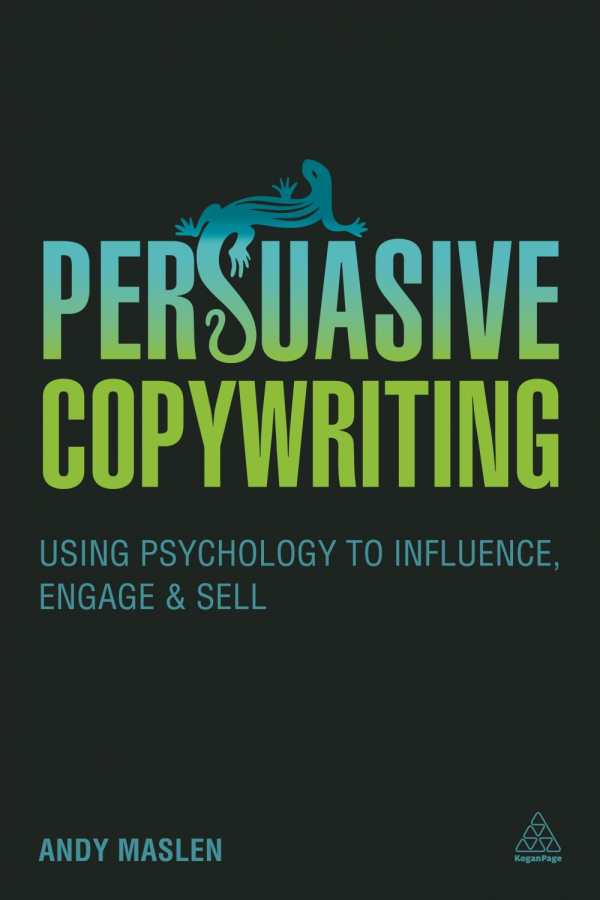Persuasive Copywriting
Using Psychology to Influence, Engage, and Sell
This in-depth look at various psychological principles behind copywriting will help writers more effectively target their customers.
In an easy-to-digest, well-organized format, Andy Maslen’s Persuasive Copywriting discusses psychological principles that underlie effective copywriting. Moving from a discussion of emotions in copywriting to an explanation of essential writing skills, the work touches on various techniques and theories behind strong sales copy.
Persuasive Copywriting is divided into two parts: first, “Emotion matters more than reason: tapping into your customer’s deepest drives,” and second, “The pleasure principle: making your writing more enjoyable and compelling.” Throughout, Maslen emphasizes keeping the reader’s desires in mind and engaging emotions, rather than simply conveying information. Less about rules than broader approaches toward influence, the author’s argument is ultimately that the copywriter’s focus should be on building a connection with the reader by helping them understand how a particular product will ease their pain points.
Persuasive Copywriting is efficiently organized: the book is further broken down into chapters that center around specific topics, such as “A powerful process for developing customer empathy” and “Copywriting and connecting on social media.” Each chapter features an introduction, subsections, case studies, and a test and exercises at the end. Also included is a glossary with various copywriting (and writing) definitions. This organization makes for a quick read, and the case studies and various tables help break up the text and concisely deliver large amounts of information, such as Maslen’s table of emotions and trigger words and phrases in the first chapter, or the twenty-six calls to action that he touches upon in Chapter 7.
Maslen also discusses evolutionary psychology, the limbic system, and cognitive processes to help explain the reasoning behind his methods, including a chart of the brain and limbic system. However, these are mentioned peripherally, and the book’s focus does not stray from its copywriting principles and advice. The author argues effectively for his methods, though a few times, some of the “good” examples read as stilted or robotic, as in Chapter 3, when he offers the following: “I think you are the sort of person who appreciates a great deal on home furnishings. That’s why I was working all of last night to bring you some of this season’s most unmissable bargains.” Overall, though, Maslen makes a compelling case for his suggestions, and includes many enlightening examples.
As Maslen states in his book, Persuasive Copywriting is not an introduction to the field or a primer, but rather a more in-depth look at various psychological principles behind copywriting that will help writers more effectively target their customers. Organized, useful, and sharp, the work would be a valuable addition to the libraries of copywriters—and writers—looking at how to improve responses to their writing.
Reviewed by
Stephanie Bucklin
Disclosure: This article is not an endorsement, but a review. The publisher of this book provided free copies of the book and paid a small fee to have their book reviewed by a professional reviewer. Foreword Reviews and Clarion Reviews make no guarantee that the publisher will receive a positive review. Foreword Magazine, Inc. is disclosing this in accordance with the Federal Trade Commission’s 16 CFR, Part 255.

